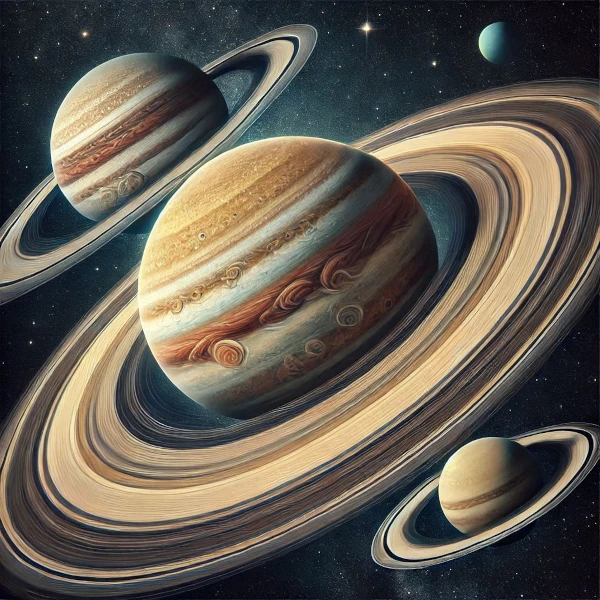
Image description: A view of Saturn with its rings. Image source: astronoo.com
Have you ever looked at pictures of Saturn and noticed its beautiful rings? But why do some giant planets have rings? It's an interesting question, and the answer is just as fascinating!
The rings around gas giants like Saturn are mainly composed of small pieces of ice and dust. These pieces come from comets, asteroids, and small moons that have broken into small pieces due to the planet's gravity.
The gravity of the giant planet is very strong. It attracts all these small pieces of ice and dust and keeps them in orbit around the planet. It's a bit like the planet has a big magnet that attracts and holds these pieces, forming rings.
Saturn is the most famous planet for its rings. They are so wide and bright that you can see them even with a small telescope. Saturn's rings are very thin, but they stretch for thousands of kilometers. They are mainly composed of water ice, which makes them very reflective and bright.
Saturn is not the only planet with rings. Jupiter, Uranus, and Neptune also have rings, but they are much less visible than Saturn's. Jupiter's rings are very thin and dark, while those of Uranus and Neptune are wider but less bright.
Studying the rings of gas giants helps us understand how planetary systems form and evolve. Scientists can learn a lot by observing these rings and analyzing their composition. This also helps us better understand our own solar system and maybe even discover new planets with rings in other star systems!
In summary, the rings around gas giants form because of the planet's gravity, which attracts and holds pieces of ice and dust. These rings are not only beautiful to look at, but they also teach us a lot about our universe. So, the next time you see a picture of Saturn, remember all the little particles orbiting around this giant planet!